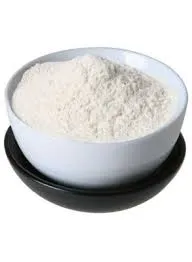
Oct . 12, 2024 06:56 Back to list
Comparative Analysis of HEC and HPMC in Pharmaceutical Formulations and Applications
Comparison of HEC and HPMC An Insight into Two Hydrocolloids
Hydrocolloids are an essential class of compounds widely used in food, pharmaceutical, and cosmetic industries due to their thickening, gelling, and stabilizing properties. Among these, Hydroxyethyl Cellulose (HEC) and Hydroxypropyl Methylcellulose (HPMC) stand out as two prominent cellulose derivatives. While they share some similarities, they also possess distinct characteristics that affect their applications. This article aims to delve into the properties, uses, and differences between HEC and HPMC.
Chemical Structure and Properties
HEC is derived from cellulose through a process that involves the reaction of cellulose with ethylene oxide. This modification results in a polymer that is able to retain water and form viscous solutions. HEC is known for its excellent solubility in cold and hot water, making it a versatile choice for various applications. It is primarily considered a nonionic polymer, which means it does not carry any charge, making it less susceptible to changes in pH and ionic strength in solution.
On the other hand, HPMC is synthesized from cellulose through etherification using propylene oxide and methyl chloride. HPMC exhibits a more complex structure due to the presence of both hydroxypropyl and methyl groups. The ratio of these groups can be adjusted during production to modify its properties. HPMC is known for its thermal gelation, meaning that it forms gels at higher temperatures, which can be beneficial in multiple formulations.
Solubility and Viscosity
One of the most significant differences between HEC and HPMC lies in their solubility profiles. HEC is highly soluble in both cold and hot aqueous solutions, while HPMC is soluble in hot water and can form gels upon cooling. This thermal behavior makes HPMC particularly suitable for applications that require viscosity changes with temperature variations. Both polymers can create viscous solutions, but HPMC tends to provide more controlled viscosity, making it preferred in precise formulations.
hec vs hpmc

Applications
The applications of HEC and HPMC are vast and varied across multiple industries. HEC is widely used in the cosmetic industry, particularly in hair care and skin care products, due to its ability to provide a smooth texture and enhance the thickness of formulations. In the food industry, it serves as a stabilizer and thickener in sauces, dressings, and bakery products.
HPMC has a strong presence in the pharmaceutical sector as well. Its gel-forming abilities make it an excellent candidate for drug delivery systems. It is often used in the formulation of hydrophilic matrices, allowing for controlled drug release. Moreover, HPMC is employed as a viscosity-increasing agent in various food products, offering stability and improving mouthfeel.
Environmental and Health Considerations
Both HEC and HPMC are considered safe for consumption and are generally recognized as safe (GRAS) by regulatory authorities. However, as with any cellulose derivatives, their environmental impact has come under scrutiny, particularly in terms of sourcing cellulose and the sustainability of production processes. The increasing demand for plant-based products has led to more sustainable practices in the sourcing of raw materials.
Conclusion
In conclusion, while Hydroxyethyl Cellulose (HEC) and Hydroxypropyl Methylcellulose (HPMC) exhibit similar properties as hydrocolloids, their differences in chemical structure, solubility, viscosity profiles, and applications make them suitable for varied uses. Understanding these differences is crucial for formulators in choosing the appropriate hydrocolloid for their specific needs, whether in pharmaceuticals, food, or cosmetic products. As industries continue to evolve, the demand for sustainable and effective hydrocolloids will ensure that both HEC and HPMC remain valuable components in formulation chemistry.
-
Unlocking the Benefits of HPMC Products: A Gateway to Versatile Applications
NewsAug.07,2025
-
Unleashing the Potential of HPMC Ashland: A Comprehensive Look
NewsAug.07,2025
-
Tile Bonding Cellulose: The Key to Superior Adhesion and Durability
NewsAug.07,2025
-
Hydroxypropyl Methylcellulose Powder: The Versatile Component in Modern Pharmaceuticals
NewsAug.07,2025
-
Hydroxyethyl Cellulose: The Versatile Solution for Various Industries
NewsAug.07,2025
-
Hydroxyethyl Cellulose (HEC): The Versatile Polymer for Various Applications
NewsAug.07,2025







